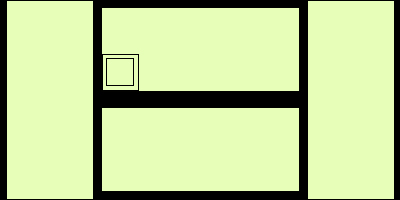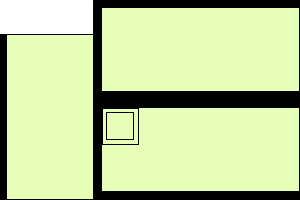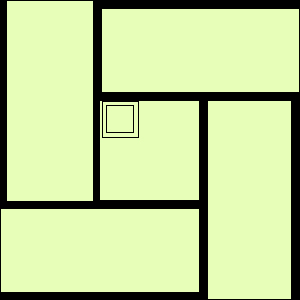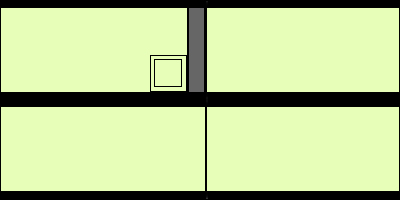Different sizes of rooms are named based on the number of Tatami mats inside the room or how they are laid out. A Koma (small room) has four-and-a-half Tatami mats.
Features of a tea room:
- Tatami mats cover the floor.
- Usually there is an alcove or Tokonoma in the room, but its size may vary.
- Sadouguchi ( 茶道口 ) (Entrance door for the Teshu/Host)
- The Sadouguchi is used by the host to enter and exit the tearoom when carrying the tea utensils.
- A Taikobusuma is a sliding door which has a lattice frame with both sides of the door with white paper. The door is opened by pushing it open by hand and no knob or handle is used.
- A Fusuma is a type of sliding door found in ancient Japanese houses. These sliding doors have been used by the Japanese for hundreds of years because of their advantages and compatibility with Japanese room and space design.

2. Tokobashira (床柱) ( Support pillar )
- Usually made of high quality wood consistent with the principle of Wabi. Red pine is sometimes used as Tokobashira with the bark left on.
- An aitebashira is a pillar found on the other side of the Tokobashira
3. Otoshigake (落としがけ) (Lintel or Beam)
- The Otoshigake supports the short wall located in front of the alcove (Tokonoma)
- It is usually made of red cedar, red pine, or Paulownia wood. A hanging vase can be hung from the back where a hook is placed
4. Kakejiku (掛軸)( Hanging scroll )
- Calligraphy or paintings reminiscent of Japanese culture are hung
- Waka poetry, letters and Zen phrases that were written by monks are typical calligraphy while paintings usually consist of landscapes, flowers and birds.
- Vintage brocades used for the frame cannot be missed. The importance of the day’s tea ceremony is evident to the guests A phrase describing summer is written on a scroll.
5. Tokogamachi ( Tokonoma lower beam )
6. Temaeza ( Teishu’s tea mat )
- This Tatami mat is used only by the Teishu when preparing tea and to re-ignite the fire.
- Temaeza can be a little smaller when a screen or short wall is placed, depending on the size and style of the tea room.
7. Nijiriguchi (にじり口) (small opening)
- A tearoom should have this small opening for the guests to use as entry
8. Tokonoma() (Alcove)
- It is an alcove in the tea room where the hanging scroll (Kakejiku) is placed and flowers (Chabana) are displayed. It is the most important area in the room therefore the chief guest or Shokyaku will be seated nearest to the Tokonoma.
Variations of a Chashitsu
1. Nijo Chashitsu is a room where two mats are used and the fire pit is placed in the Temaeza mat with a board measuring 3 inches (7.5 cm) behind it.

2.Naga-yojo Chashitsu
This is a rectangular Chashitstu with four mats and with a fire pit located between the Teishu and his guests.

3. Nijo-Daime Chashitsu
This Daime-style tearoom uses two guest mats and a shorter one for the Teishu. The fire pit is situated between Teishu and his guests.

4.Hira-Sanjo Chashitsu
This tearoom uses three mats with the fire pit also situated between the Teishu and his guests.

5.Yojohan Chashitsu
This chashitsu has four and a half mats.

6.Ichijo-Daime Chashitsu
This Daime-style tearoom is provided with one mat for the guests and a smaller mat for the Teishu. The fire pit is situated in the Teishu’s matted area.

7.Fuka-Sanjo Chashitsu
This is a Three-mat Chashitsu where the fire pit is located in the Teishu’s matted side on the side of the wall with a 45cm board.

8.Old-style Naga-yojo Chashitsu
This is a traditional, rectangular tearoom with four mats and a fire pit between the Teishu and guests. It is also provided with a 15cm board.

II. History of the Japanese Tea Ceremony
III. Types of the Japanese Tea Ceremony
IV. Preparing tea
V. Equipment used during a tea ceremony (temae)
VI. Tea Ceremony Equipment for Guests
VII. Rank of Tea Ceremony Utensils
VIII. Room Preparation for tea ceremony
IX. Chashitsu Tea Rooms